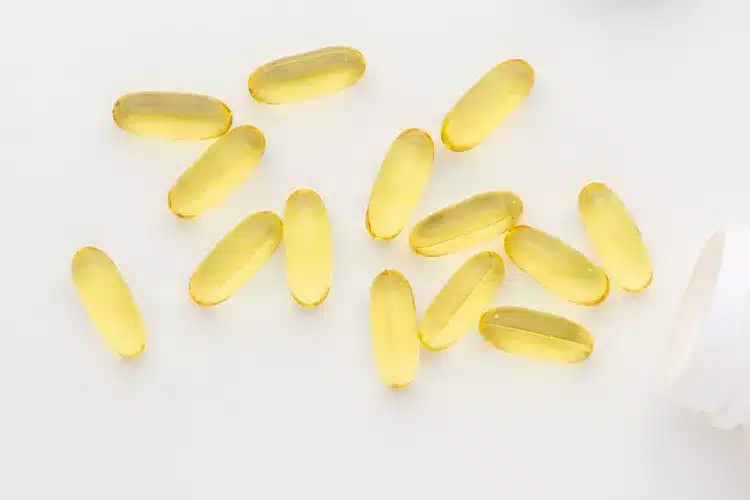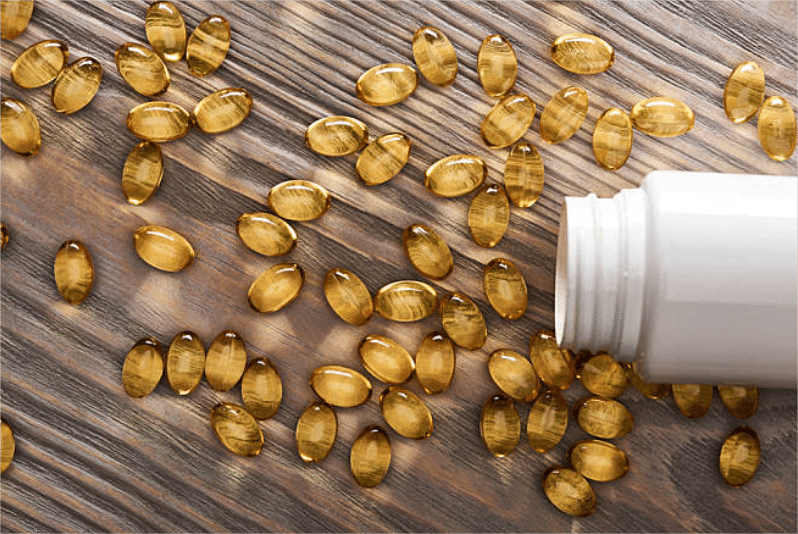In natural health supplements, Evening Primrose Oil and Black Cohosh are well-known remedies that offer various benefits, particularly for women’s health. Evening Primrose Oil is renowned for its omega-6 fatty acids, while Black Cohosh is frequently used for its potential to alleviate menopausal symptoms. This extensive guide will explore both supplements in-depth, examining their properties, mechanisms of action, benefits, scientific evidence, and practical applications. By the end, you’ll thoroughly understand how these two supplements compare and how they might fit into a health regimen.
1. Introduction to Evening Primrose Oil and Black Cohosh
1.1 Evening Primrose Oil
Evening Primrose Oil (EPO) is extracted from the evening primrose plant’s seeds (Oenothera biennis). This Oil is rich in essential fatty acids, particularly gamma-linolenic acid (GLA), an omega-6 fatty acid. EPO is widely used for its potential health benefits, including skin health, hormonal balance, and inflammatory conditions.
1.2 Black Cohosh
Black Cohosh (Cimicifuga racemosa or Actaea racemosa) is a perennial plant native to North America. The root of the Black Cohosh plant is used to create supplements. It is most commonly used to address menopausal symptoms such as hot flashes, night sweats, and mood swings. Black Cohosh has a long history of being used in traditional medicine to treat women’s health issues.
2. Chemical Properties and Sources
2.1 Evening Primrose Oil: Chemical Composition and Sources
Evening Primrose Oil is predominantly composed of the following:
- Gamma-linolenic acid (GLA): An omega-6 fatty acid with anti-inflammatory properties.
- Linoleic Acid: Another omega-6 fatty acid that supports skin health and overall cell function.
- Other Fatty Acids include oleic acid and palmitic acid in smaller amounts.
Sources:
- Evening Primrose Seeds: The Oil is extracted from the evening primrose plant’s seeds.
2.2 Black Cohosh: Chemical Composition and Sources
The critical components of Black Cohosh include:
- Triterpene Glycosides: These are thought to be the primary active compounds that may influence hormonal activity.
- Phenolic Acids: Contribute to the plant’s potential anti-inflammatory effects.
- Flavonoids: These compounds have antioxidant properties.
Sources:
- Black Cohosh Root: Supplements are made from the dried root of the Black Cohosh plant.
3. Mechanisms of Action
3.1 Evening Primrose Oil: Mechanisms and Effects
Evening Primrose Oil works through several mechanisms in the body:
- Anti-Inflammatory Effects: GLA in EPO is converted into anti-inflammatory prostaglandins, which help reduce inflammation and pain.
- Hormonal Balance: GLA may support hormonal balance, potentially alleviating symptoms associated with premenstrual syndrome (PMS) and menopause.
- Skin Health: EPO is believed to improve skin hydration and elasticity, reducing symptoms of eczema and acne.
- Cardiovascular Health: Omega-6 fatty acids in EPO may contribute to cardiovascular health by influencing cholesterol levels and blood pressure.
3.2 Black Cohosh: Mechanisms and Effects
Black Cohosh exerts its effects through various mechanisms:
- Estrogenic Activity: Black Cohosh may have estrogen-like effects, which can help alleviate menopausal symptoms by mimicking the action of estrogen in the body.
- Serotonin Receptor Modulation: Some research suggests that Black Cohosh might influence serotonin levels, affecting mood and hot flashes.
- Anti-Inflammatory Effects: Compounds in Black Cohosh have been shown to reduce inflammation, potentially benefiting conditions associated with inflammation.
4. Health Benefits and Applications
4.1 Evening Primrose Oil: Benefits and Uses
Evening Primrose Oil is used for various health concerns:
- Menstrual and Menopausal Symptoms: EPO may help alleviate PMS symptoms and menopausal hot flashes by supporting hormonal balance.
- Skin Disorders: It is commonly used to treat eczema, acne, and dry skin due to its effects on skin hydration and inflammation.
- Rheumatoid Arthritis: The anti-inflammatory properties of GLA can help reduce joint pain and stiffness in rheumatoid arthritis.
- Cardiovascular Health: EPO may contribute to heart health by improving lipid profiles and reducing inflammation.
4.2 Black Cohosh: Benefits and Uses
Black Cohosh is predominantly used for:
- Menopausal Symptoms: Effective in reducing hot flashes, night sweats, and mood swings associated with menopause.
- Premenstrual Syndrome (PMS): Balancing hormones may help alleviate PMS symptoms.
- Menstrual Cramps: Black Cohosh sometimes relieves menstrual cramps and related discomfort.
- Bone Health: Some evidence suggests that Black Cohosh may support bone health, although this is less well-established.
5. Scientific Evidence and Research
5.1 Evening Primrose Oil: Research Overview
Scientific research on Evening Primrose Oil includes:
- Menstrual and Menopausal Symptoms: Studies have shown mixed results regarding EPO’s effectiveness in reducing PMS and menopausal symptoms. Some research suggests it may be beneficial, while other studies have found minimal effects.
- Skin Health: Research supports EPO’s role in improving skin hydration and elasticity, particularly in conditions like eczema and acne.
- Rheumatoid Arthritis: Evidence indicates that GLA can help reduce inflammation and joint pain, although individual results vary.
- Cardiovascular Health: Studies suggest EPO may positively impact cholesterol levels and cardiovascular health, though more research is needed.
5.2 Black Cohosh: Research Overview
Research on Black Cohosh includes:
- Menopausal Symptoms: Numerous studies support Black Cohosh’s effectiveness in reducing hot flashes and other menopausal symptoms. Some studies suggest it is comparable to hormone replacement therapy in efficacy.
- PMS and Menstrual Cramps: Evidence supporting Black Cohosh’s effectiveness in treating PMS and menstrual cramps is less robust but suggests potential benefits.
- Bone Health: Research on Black Cohosh and bone health is limited and inconclusive, with some studies suggesting potential benefits and others finding no significant effects.
6. Comparative Analysis
6.1 Efficacy in Health Benefits
Both Evening Primrose Oil and Black Cohosh offer unique benefits:
- Evening Primrose Oil: Best suited for those seeking support for hormonal balance, skin health, and inflammatory conditions.
- Black Cohosh: Primarily used for managing menopausal symptoms and, to a lesser extent, PMS and menstrual cramps.
6.2 Mechanism of Action
Evening Primrose Oil primarily works through its anti-inflammatory properties and effects on hormonal balance, whereas Black Cohosh may provide relief through estrogen-like effects and serotonin modulation.
6.3 Safety and Tolerability
- Evening Primrose Oil: Generally considered safe when used as directed. Possible side effects include gastrointestinal discomfort or headache.
- Black Cohosh: Generally well-tolerated, but it can cause gastrointestinal upset or, rarely, liver issues in some individuals. Long-term safety is less well-established.
7. Conclusion
Evening Primrose Oil and Black Cohosh are valuable supplements with distinct applications and benefits. Evening Primrose Oil is particularly effective for supporting hormonal balance, skin health, and managing inflammation. It is a good choice for those seeking a plant-based source of omega-6 fatty acids and relief from skin conditions. Black Cohosh, on the other hand, is a well-established remedy for menopausal symptoms and may also aid in managing PMS and menstrual cramps.
Choosing between Evening Primrose Oil and Black Cohosh depends on individual health needs and goals. For those experiencing menopausal symptoms, Black Cohosh may be more appropriate. Evening Primrose Oil might be a better fit for those seeking support for hormonal balance, skin health, or inflammation. As always, it is essential to consult with a healthcare professional before starting any new supplement to ensure it is suitable for your specific health conditions and needs.




